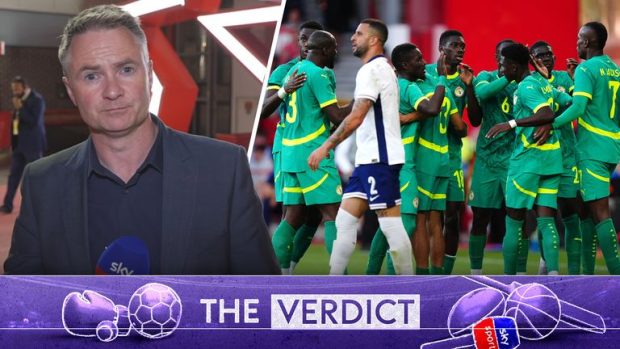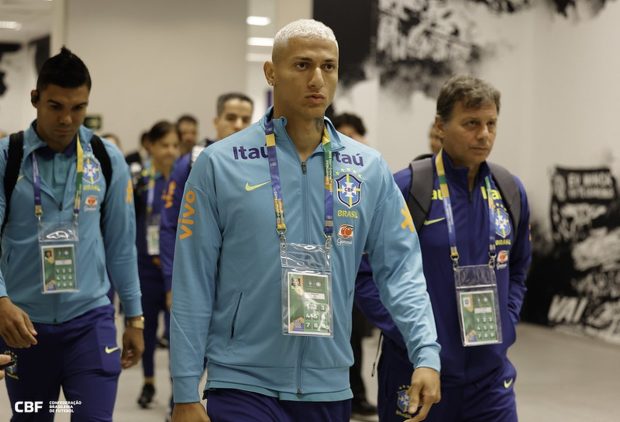
Case closed. The end of the argument. Best-of-five-set-tennis haters in shambles.
Whether tennis should eliminate its longest format is an ongoing discussion, but for its advocates, Sunday’s instant classic French Open final between Jannik Sinner and Carlos Alcaraz was the ultimate endorsement.
Five and a half hours of undulating tension and elite-level competition, given deeper meaning by how its length raised the significance of the match’s decisive moments. The format allowed the match to take on an epic quality, elevating Sinner and Alcaraz’s rivalry, previously incipient to the wider world outside of tennis, into something transcendental. The Wimbledon finals between Björn Borg and John McEnroe in 1980, and then Roger Federer and Rafael Nadal in 2008, had the same effect.
Advertisement
The highs of matches like Sunday’s is a compelling, possibly inarguable, case for the upsides of the format outweighing the downsides, but for dedicated tennis followers, the downsides are harder to ignore.
But for regular watchers of the sport, there most certainly are downsides. Five-set matches like the Sinner-Alcaraz classic are rare. While their computer-game fast, extremely physical and incredibly powerful tennis is awe-inspiring, it’s more often the case that even matches between two of the world’s best players have sags and dips. Alcaraz and Sinner met in last year’s French Open semifinal in another five-set match. That one was scratchy and strange. They rarely played well at the same time, and with both of them having physical issues toward the end, there was a lot of energy conservation at the end of sets.
A more typical five-set Grand Slam match would be something like Tommy Paul vs. Karen Khachanov, from this year’s fourth round. Two well-matched players — the No. 12 seed and the No. 24 seed — swapping sets for four hours, seven minutes. On Sunday, no one wanted Sinner vs. Alcaraz to end. More often, five-set matches ebb unsatisfyingly before eventually reaching the end.
Tennis was not designed to take anywhere near this long. It was conceived of as a sport where even five-set matches would take a maximum two hours. The first Wimbledon final that went to five sets, in 1887 between Herbert Lawford and Ernest Renshaw, lasted 120 minutes. More than 50 years later, the 1949 final between Ted Schroeder and Jaroslav Drobný lasted 100 minutes. That’s only 15 minutes longer than just the second set of the 2023 final between Alcaraz and Novak Djokovic. A glance at five-set Wimbledon finals from the first half of the 20th century shows matches between 95 and 135 minutes.
Advertisement
Match lengths have steadily increased since, and the rate of rise has steepened since the turn of this century. As of June 2023, they had become 25 percent longer on average since 1999. Three-hour matches, previously the marker of something epic, had become close to the average. This is due to a complex combination of surface and equipment changes, advances in fitness and changes in dominant gamestyles, but the net result is more long matches, more often.
The increased length and physicality has a knock-on effect through tournaments. Players that come through a five-setter at a Grand Slam may be wiped out for their next match, or by the start of the second week, if they’ve had a few long ones. At the Australian Open in January, a number of fourth-round matches included either blowouts or mid-match retirements from players who had burned themselves out physically in the first week. Jack Draper withdrew at the end of the second set against Alcaraz having played five-setters in all three of his previous matches.
With Grand Slams drawn such that high-seeded players like Draper are drawn to face weaker opponents early on, there are some who like this karmic aspect of the best-of-five format: mess around against an overmatched opponent and pay for it down the line. But density and depth of quality on the ATP Tour has grown in line with match lengths to the point that sometimes, players just get dragged into a war of attrition that leaves one player losing and the other scoring a pyrrhic victory.
The longer format also drastically reduces the number of viable champions. Very few players can consistently withstand the demands of best-of-five tennis against the best in the world; upsets are less likely because the better player has more time to work things out.
All of which raises questions about who the formats are there to serve. For fans, the tension is between how much intrigue is generated by the best matches and how dull the worst can be. Matches like Sinner vs. Alcaraz catapult tennis into the wider sporting consciousness; when a less interesting match is tied at one-set all after two hours, its conclusion can feel so far away that changing channel is an entirely reasonable response.
Advertisement
Then there’s the question of the players, who generally like best of five because it’s seen as the ultimate test and one that will typically lead to the best player winning. It’s a lot harder to sneak a best-of-five win than a best-of-three one.
One would be for the Grand Slams to have a hybrid system: best of three for the first three or four rounds; best of five for the last three or four rounds. The biggest matches could go long, but without so much accumulated fatigue from earlier in the tournament, and the early-round grinds would be eliminated. The switch from shorter to longer matches mid-tournament could be problematic for the players physically, but they already make have to make that adjustment for majors, with all other tour events played to three sets.
This hybrid format could also be used in the women’s events, creating equality and taking away situations like at the French Open, where men are given the prime scheduling slots because, according to tournament organizers, they are longer and therefore offer fans better value for money.
WTA players are generally not enthused by the idea of playing five sets, however. There is precedent — between 1984 and 1998, the final of the year-ending WTA Finals was best of five.
All of this remains theoretical, because the slams have never shown any inclination to tweak the best-of-five format. They post record attendances and revenues, and longer matches generally means people in the grounds for longer with more scope to spend more of their money. And while the Sinner vs. Alcaraz final is proof of the majesty of tennis’ most gladiatorial format, it’s important to remember that matches of that level are the exception rather than the norm.
(Photo: Clive Brunskill / Getty Images)
This news was originally published on this post .







Be the first to leave a comment